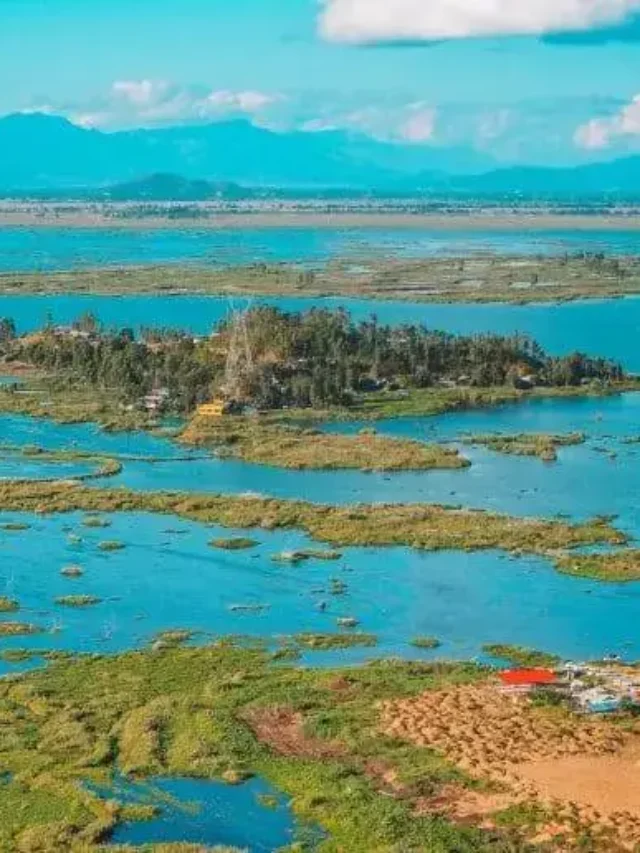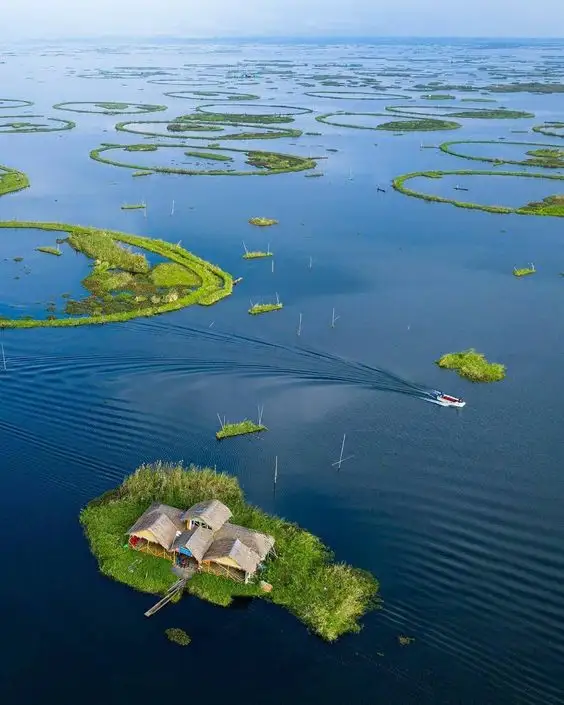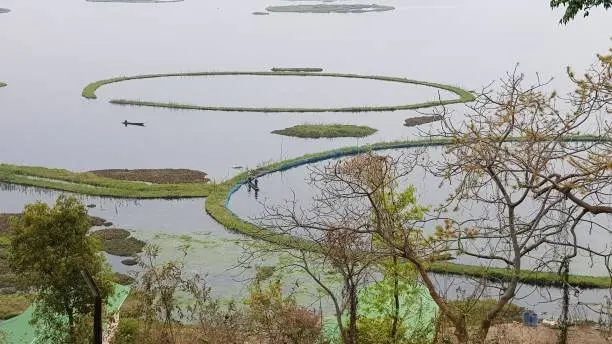Keibul Lamjao National Park: The Jewel of Manipur’s Biodiversity
Explore the unique and captivating Keibul Lamjao National Park, the only floating national park in the world, located in the enchanting state of Manipur, India. Learn about its diverse wildlife, serene landscapes, and the conservation efforts that have made it a crucial sanctuary for the endangered Sangai deer.
Nestled in the northeastern state of Manipur, Keibul Lamjao National Park is a natural wonder that beckons travelers and nature enthusiasts alike. This captivating park is not just any national park; it holds the distinction of being the only floating national park in the world. The park’s most cherished inhabitant is the endangered Sangai, or Manipur brow-antlered deer, which is found nowhere else on Earth.
Keibul Lamjao National Park: A Sanctuary on Water

Keibul Lamjao National Park is located in the Bishnupur district of Manipur and covers an area of approximately 40 square kilometers. The park’s unique feature is the Loktak Lake, the largest freshwater lake in northeastern India, which serves as a vital ecosystem for various flora and fauna.
The Enigmatic Sangai Deer
The Sangai deer (Rucervus eldii eldii) is the star attraction of Keibul Lamjao National Park and holds significant cultural and ecological importance in Manipur. It is also the state animal of Manipur. With its majestic appearance and graceful antlers, the Sangai is a sight to behold. Sadly, due to various factors such as habitat loss and poaching, the Sangai was on the brink of extinction. However, dedicated conservation efforts have managed to stabilize its population and provide hope for the future.
Discovering Keibul Lamjao’s Flora and Fauna
Beyond the charismatic Sangai deer, the national park boasts an array of diverse flora and fauna that make it a biodiversity hotspot in the region. From the verdant floating meadows to the lush forests, every corner of Keibul Lamjao National Park offers a unique glimpse into the wonders of nature.
Rich Avian Diversity
Keibul Lamjao is a paradise for birdwatchers, with over 100 bird species calling it home. Some of the most notable avian residents include the Indian Peafowl, Lesser Whistling Duck, Spot-billed Pelican, and the globally threatened Marsh Babbler.
Wetland Plants and Aquatic Life
The Loktak Lake within the park is adorned with a variety of aquatic plants, including the Phumdi, a unique heterogeneous mass of vegetation, soil, and organic matter that floats on the water surface. This specialized ecosystem supports various aquatic species, such as the Manipur Bush Quail and the Waterfowl.
The Phumdi Phenomenon: A Floating Wonder

One of the most extraordinary aspects of Keibul Lamjao National Park is the Phumdi, a fascinating mass of floating vegetation that covers a substantial portion of Loktak Lake.
Formation of Phumdi
Phumdi is an organic phenomenon created by the accumulation of decaying plant materials, such as reeds, rushes, and grasses. Over time, these materials intertwine and form floating circular mats that can vary in size, from a few meters to several kilometers in diameter.
Role of Phumdi in Ecosystem
This unique floating ecosystem plays a crucial role in the survival of the Sangai deer. The deer use the Phumdi as a safe refuge from predators and human disturbances. Additionally, the Phumdi serves as a nesting ground for several bird species, contributing to the park’s rich avian diversity.
Conservation Efforts and Challenges
The Keibul Lamjao National Park owes its survival and recovery to dedicated conservation efforts, but it continues to face numerous challenges.
Conservation Success Story
In the 20th century, the Sangai population dwindled to a mere handful, raising concerns about its survival. However, conservationists, along with local communities, came together to protect and restore the park’s fragile ecosystem. The establishment of the park in 1977, as well as initiatives to control poaching and habitat restoration, helped the Sangai population rebound.
Ongoing Threats
Despite the positive outcomes, Keibul Lamjao National Park still faces several threats, including habitat degradation due to human encroachment, pollution, and invasive species. Climate change also poses a significant challenge, affecting the delicate balance of the park’s ecosystem.
Exploring Keibul Lamjao: Eco-Tourism and Sustainable Travel
The beauty and significance of Keibul Lamjao National Park have not gone unnoticed, and eco-tourism has emerged as a means to promote sustainable travel and raise awareness about conservation.
Eco-Friendly Tourism Initiatives
Several eco-friendly tourism initiatives have been introduced to minimize the impact of visitors on the fragile environment. Tourists can explore the park on guided boat tours, providing them with a chance to witness the enchanting wildlife without disturbing their natural habitat.
Responsible Travel Tips
Visitors to Keibul Lamjao National Park can contribute to its preservation by following responsible travel practices. These include refraining from littering, respecting the park’s rules, and supporting local communities and businesses that prioritize conservation.
Conclusion
Keibul Lamjao National Park stands as a testament to the power of conservation and the delicate balance between humans and nature. With its unique floating ecosystem and the endangered Sangai deer, the park continues to inspire awe and admiration. As travelers, it is our responsibility to protect and preserve this jewel of Manipur’s biodiversity for generations to come.
FAQs about Keibul Lamjao National Park
What makes Keibul Lamjao National Park unique?
Keibul Lamjao is the only floating national park in the world, and it is home to the endangered Sangai deer, found only in this region.
How can I reach Keibul Lamjao National Park?
The nearest airport is Imphal Airport, and the park is well-connected by road from major cities in Manipur.
What is the best time to visit the park?
The ideal time to visit is during the winter season (November to February) when the weather is pleasant, and the wildlife is more active.
Are there any accommodations available near the park?
Yes, there are several eco-friendly resorts and guesthouses near the park that offer a comfortable stay.
Can I spot the Sangai deer easily?
While the Sangai deer can be elusive, hiring a knowledgeable guide can significantly increase your chances of spotting them.
How can I contribute to the conservation of Keibul Lamjao National Park?
You can support the park by participating in eco-friendly tours, spreading awareness about its significance, and donating to conservation organizations.
Also Read These Post
Online PAN Card Kaise Banaye| ऑनलाइन पेन कार्ड कैसे बनाए
How to Get a Proxy for WhatsApp
How to earn money on Facebook $500 every day

